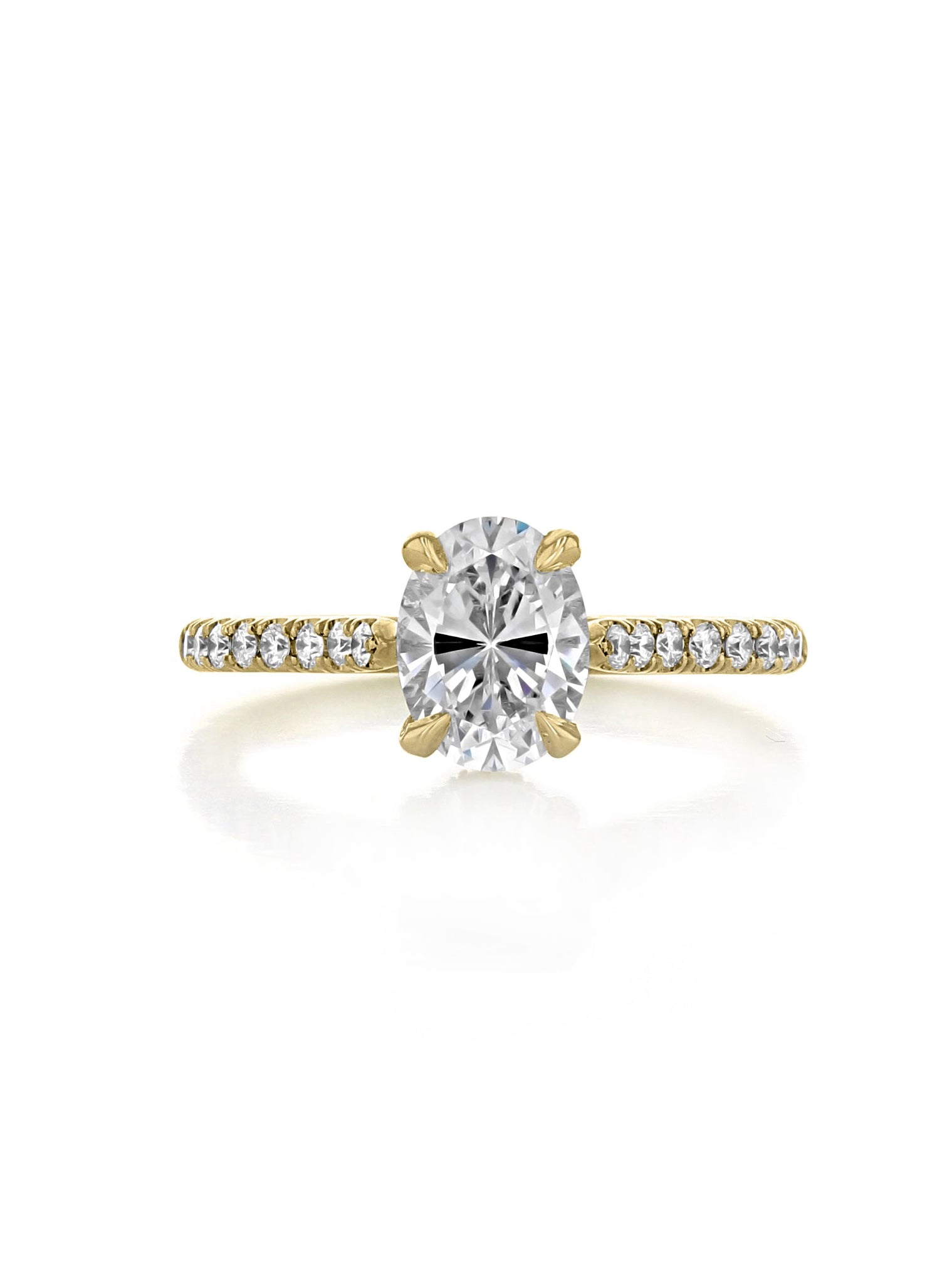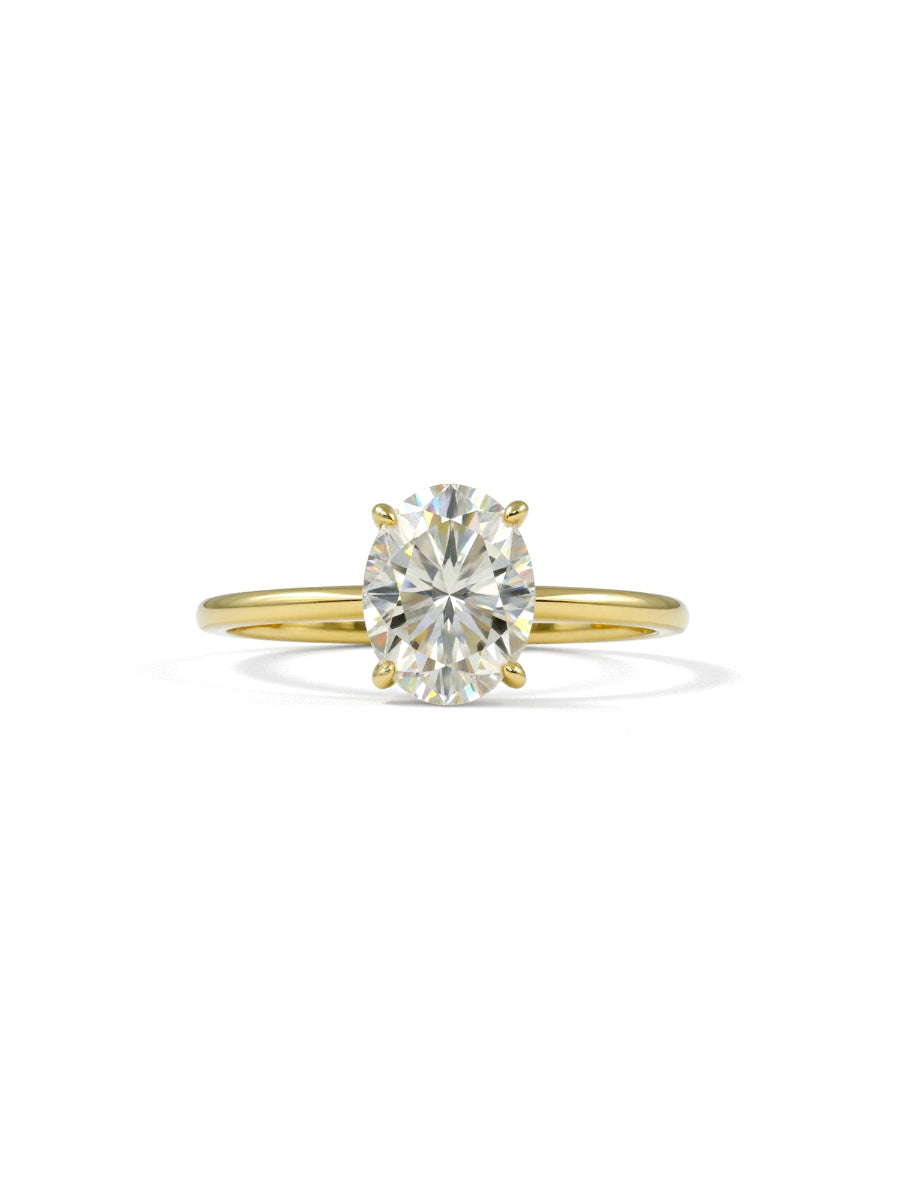
Moissanite vs Diamond: Which is the Better Choice for Your Jewelry?
When it comes to choosing between Moissanite and Diamond, it can be tough to decide which is the better choice for your jewelry. Both stones have dazzling beauty, incredible sparkle, and can be used in a variety of settings, but they differ in several key aspects. Whether you’re shopping for an engagement ring, a necklace, or a pair of earrings, it’s essential to understand what makes each stone unique. In this article, we’ll break down the differences between Moissanite and Diamonds, helping you make an informed decision.
What is Moissanite?
Moissanite is a rare, naturally occurring mineral that was first discovered in 1893 by French chemist Henri Moissan. Though it was initially found in a meteor crater, today’s Moissanite is primarily lab-created. Known for its brilliance and fiery sparkle, Moissanite is often considered a diamond alternative. The gemstone is made of silicon carbide, a material that offers excellent durability and a higher refractive index than diamonds, which means it sparkles more intensely.
Want to add some stunning Caratina Moissanite pieces to your collection? Go ahead and shop Moissanite jewelry at Caratina!

What is a diamond?
Diamonds are one of the most coveted and well-known gemstones in the world. Formed under extreme pressure and heat deep within the Earth’s crust, diamonds are made of carbon atoms arranged in a crystalline structure. Diamonds have long been associated with luxury, romance, and timeless elegance, making them the traditional choice for engagement rings and fine jewelry. They are graded based on the "Four Cs"—cut, color, clarity, and carat weight—which determine their overall quality and value.
Moissanite vs Diamond: Key Differences
-
Sparkle and Brilliance
Moissanite: Moissanite has a higher refractive index than diamonds, which means it reflects more light and exhibits more brilliance and fire (the colorful flashes of light you see). It’s often described as having an almost “rainbow-like” sparkle.
Diamond: While diamonds are incredibly brilliant, their refractive index is lower than that of Moissanite. Diamonds reflect light more evenly, creating a more subdued sparkle compared to the fiery brilliance of Moissanite.
-
Durability
Moissanite: Moissanite is extremely hard, ranking 9.25 on the Mohs scale of hardness. It’s second only to diamonds, which makes it a great choice for everyday wear.
Diamond: Diamonds are the hardest natural material known to man, with a perfect score of 10 on the Mohs scale. They are incredibly durable and resistant to scratching.
-
Cost
Moissanite: Moissanite is generally much more affordable than diamonds. This makes it an attractive option for those who want the look of a high-quality moissanite gemstone without the hefty price tag.
Diamond: Diamonds, especially high-quality ones, are significantly more expensive. The price is influenced by factors like size, cut, color, and clarity.
-
Color
Moissanite: Moissanite typically has a slight color, though many are created to have a near-colorless appearance. Some people may notice a slight yellow or greenish tint in certain lighting.
Diamond: Diamonds are graded for color on a scale from D (colorless) to Z (light yellow or brown). The best diamonds are colorless, while diamonds with a noticeable yellow or brown hue tend to be less valuable.
-
Environmental Impact
Moissanite: Moissanite ilab is grown, making it an eco-friendly choice. Lab-created moissanite stones have a smaller environmental footprint compared to mined diamonds, which can involve significant resource extraction and environmental disruption.
Diamond: While there are ethical and sustainable options, traditional diamond mining can have a substantial environmental impact. However, some diamond companies offer conflict-free or lab-grown diamonds as a more sustainable choice.
-
Value Retention
Moissanite: While Moissanite is durable and holds its value well, it doesn’t retain its resale value in the same way that diamonds do. If you’re looking for an investment that will appreciate over time, diamonds tend to perform better in terms of resale value.
Diamond: Diamonds are often seen as investments, particularly high-quality diamonds that are rare and in demand. While they can appreciate in value, their price can fluctuate depending on market conditions.
Moissanite vs Diamond: Key Differences
| Feature | Moissanite | Diamond |
|---|---|---|
| Price | More affordable (up to 90% less) | Expensive, especially for larger stones |
| Brilliance | Higher brilliance (more sparkle) | Classic brilliance, but less than Moissanite |
| Durability | Very durable (9.25 on Mohs scale) | Extremely durable (10 on Mohs scale) |
| Rarity | Man-made or lab-created, not as rare | Natural, rare, and formed over millions of years |
| Color Range | Typically colorless or near-colorless | Comes in a wide range of colors, from colorless to faint yellow or brown |
| Environmental Impact | Lab-created, minimal environmental impact | Mining can have a larger environmental footprint |

Which Should You Choose: Moissanite or Diamond?
The choice between Moissanite and Diamond ultimately depends on your preferences and priorities. Here are a few considerations:
- If you want a high-quality, affordable option, Moissanitete is an excellent choice. It offers exceptional brilliance and durability at a fraction of the price of a diamond.
- If you’re seeking a timeless icon, diamonds are the traditional choice. They have a long-standing reputation for luxury and value, and they’re often the preferred stone for engagement rings and significant life milestones.
- If sustainability matters to you, Moissanitete is a great option since it’s lab-created and environmentally friendly. It offers an ethical alternative to mined diamonds.
Final Thoughts
When choosing between Moissanite and Diamond, both have their distinct advantages. Moissanite is a brilliant, affordable, and eco-friendly alternative, while diamonds offer unmatched rarity and timeless appeal. Whether you’re shopping for an engagement ring or another piece of fine jewelry, it’s important to consider factors like budget, durability, and aesthetic preferences.
Ready to Make Your Choice?
Now that you know the differences between Moissanite and Diamond, it’s time to find the perfect gemstone for your jewelry. Take your time to explore your options and choose the one that speaks to your style and values. Whether you go for the brilliance of Moissanite or the iconic elegance of diamonds, you’ll be wearing a stunning piece of jewelry that will last a lifetime!

FAQs: Moissanite vs Diamond
-
Does Moissanite look like a diamond?
Yes, Moissanite closely resembles a diamond in terms of appearance, but it has a more intense sparkle and fire due to its higher refractive index.
-
Which is more durable, Moissanite or Diamond?
Both Moissanite and Diamond are highly durable, but diamonds are the hardest material on Earth, scoring a 10 on the Mohs scale. Moissanite ranks 9.25, making it second in hardness.
-
Can you tell the difference between Moissanite and Diamond?
The difference is difficult to spot without close inspection. However, moissanitete tends to have more sparkle, while diamonds have a subtler brilliance. A professional jeweler can easily distinguish the two.
-
Is Moissanite a good choice for an engagement ring?
Yes! Moissanite makes an excellent engagement ring stone. It’s durable, affordable, and sparkles beautifully, making it an excellent option for couples on a budget or those who prefer a unique stone.
-
Why are Moissanite stones so much cheaper than diamonds?
Moissanite is less expensive than diamonds because it is lab-grown and doesn’t have the rarity or extraction costs associated with natural diamonds.


















